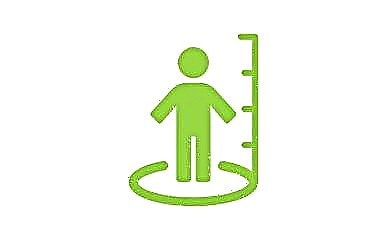Children are very curious. They, playing, learn about the world around. Quite often, after playing, or just out of curiosity, children push all kinds of small objects into their noses with their own hands. In addition, during the game, the child can shove something into the nose of his little brother or sister, as well as the friend with whom he is playing. The kid put a seed, bead or plasticine into his nose, what should be done? Any object that has penetrated the nasal cavity is called a foreign body. A foreign body in the nose is most often treated by parents with preschool children. The kid can stuff anything in the nose that fits the size. Doctors remove all kinds of objects from children's noses.
What are the types of foreign objects?
Foreign objects in children in the nose can be of organic and inorganic origin.
In the first case, these are most often seeds, nuts, berries, sweets, vitamins, as well as solid pieces of food - vegetables, fruits, bread crust, cookies. In addition, this includes various insects that can fly into the nose when a child is walking on the street.
 Inorganic objects are all that a child may encounter at home or in a kindergarten:
Inorganic objects are all that a child may encounter at home or in a kindergarten:
- beads, buttons, wheels from typewriters, small designer parts, cotton wool, pieces of paper, plasticine, small coins, buttons, paper clips, carnations;
- fragments of the nasal bones, glass, stones trapped in the nasal cavity as a result of trauma to the nose and its sinuses.
As you understand from the composition of the material, the texture of its surface and the variety of shapes, foreign bodies are quite diverse.
According to the time of presence in the nasal cavity, foreign bodies are divided into:
- sharp. These are those that have recently (minutes, hours) been introduced into the nasal cavity;
- chronic. These are those that are present in the nasal cavity for a long time (several days and months);
- rhinolitis. They are also called nasal stones. They are formed by the long-term presence of a foreign body in the nose. As a result, it becomes overgrown with connective tissue, which is formed due to damage to the mucous membrane by a foreign object and the development of inflammation.
Symptoms
Signs of acute foreign bodies in the nose are similar to those of acute rhinitis (runny nose).
Children complain about:
- itching in the nasal cavity (itching in the nose);
- Difficulty breathing through the nose
- frequent paroxysmal sneezing;
- profuse watery discharge from the nose;
- bleeding, since if the mucous membrane of the nose is damaged, there may be discharge with streaks of blood, or nosebleeds;
- pain in the nose when the mucous membrane is injured by a foreign object.
Adult patients almost always tell when and what they injected into their nose. Children are an exception. They are often afraid that they will be punished by their parents for their tricks, and are silent about what happened. Therefore, it is important for parents to detect and remove the foreign body as soon as possible in order to avoid the development of complications.
How to distinguish a common cold from the presence of a foreign body in the nose?
If the child has stuffed an object into his nose, some signs will help to understand that this is not a runny nose.
Signs of the difference between a runny nose and a foreign body in the nasal cavity:
- In the presence of a foreign body, the process is usually one-sided, that is, itching and flowing will only be from one nostril. With a runny nose, these signs are bilateral.
- A sudden start. All signs appear suddenly against the background of the child's full health. If it is a runny nose, then children usually complain of malaise (headache, drowsiness appears, body temperature rises).
If you think about the presence of a foreign body, but are not exactly sure about it, be sure to show your child to the doctor. Excessive examination will not harm the baby, but will help to avoid complications if there is a foreign body.
Chronic foreign bodies are clinically similar to chronic rhinitis or sinusitis (inflammation of the paranasal sinuses).
The child is worried about:
- Difficulty nasal breathing on one side;
- purulent or suppurative (blood-streaked) discharge from the nose with an unpleasant odor;
- inflammation of the nasal mucosa with the formation of purulent crusts.
Rhinolith is formed as a result of the long presence of a foreign body, due to which there is a limited inflammation of the mucous membrane, characterized by the proliferation of connective tissue and the deposition of salts, which ultimately ends with the overgrowth of the foreign body with the mucous membrane.
 Children in this stage usually complain that it is difficult for them to breathe through their nose. Rhinoliths are often discovered by chance during routine checkups.
Children in this stage usually complain that it is difficult for them to breathe through their nose. Rhinoliths are often discovered by chance during routine checkups.
Ways of penetration of foreign bodies into the nose
Outside, that is, outside:
- children personally put something in their nose;
- some particles may end up in the nose as a result of medical manipulations (pieces of bandages, cotton wool);
- on the street, various small insects can fly into the nose;
- the baby can breathe in fluff, fur particles or pollen.
From the inside:
- if the child chokes while eating and begins to cough, pieces of food enter the nasal cavity through the choanae;
- it happens that food particles enter the nose when the child vomits.
What should parents do?
What if you saw how the baby stuffed, for example, a seed into his nose?
Treatment of diseases of the nose, including the removal of foreign bodies, is the task of the otorhinolaryngologist (ENT doctor).
 If you see a foreign object or suspect it might be in your child's nose, contact him. If this happens in the evening or on a weekend and the clinic is not open, you can go to the emergency room of the children's hospital.
If you see a foreign object or suspect it might be in your child's nose, contact him. If this happens in the evening or on a weekend and the clinic is not open, you can go to the emergency room of the children's hospital.
Your child will be examined by the ENT doctor on duty, and if there is none, then the pediatrician on duty. The doctor will do a rhinoscopy - an examination of the nasal cavity using a nasal speculum - and, if possible, remove a foreign body. This procedure is completely painless.
Therefore, if your baby is over 2 years old, tell him about it so that he is not afraid and let the doctor examine himself calmly.
If, during rhinoscopy, a foreign body is not visible or the baby is very worried and does not allow himself to be examined, additional examination methods may be prescribed: ultrasound or radiography. But this happens quite rarely.
What can you do at home?
You can try to remove the foreign object yourself at home if it is nearby and you can see it well.
- Ask your child to blow their nose by pinching their empty nostril and tilting their head slightly forward.
- You can induce a sneeze by letting your child sniff the pepper. When your toddler sneezes, pinch the empty nostril.
- If you can't get the item out, ask your baby to breathe through his mouth. This will prevent the subject from going deeper. In this situation, you should immediately consult a doctor.
It is allowed to independently try to pull out a foreign body in children over five years old, when they understand you well and clearly fulfill your requests.
Never try to remove an object with your finger or using something long and sharp. You can injure the mucous membrane or push it even deeper.
In cases where the baby is very worried or is bleeding from the nose, removing a foreign object is risky due to the risk of complications. Therefore, you should not experiment, but you should go to an otorhinolaryngologist.
Methods for removing foreign bodies from the nasal cavity in a medical facility
If a foreign body has recently entered the nose, the easiest way is to blow out the nose. If there is no effect, a solution of adrenaline or drops with a vasoconstrictor effect is sprayed into the nasal cavity and blown out again.
 Removal of a foreign body using instruments.
Removal of a foreign body using instruments.
Before removing it, children are anesthetized using 10% lidocaine solution. Preschoolers may need anesthesia.
The instrument is selected depending on the characteristics of the foreign body. To remove a foreign body from soft (cotton wool, paper, grass) or hard elongated (matches) material, use tweezers. A rounded solid foreign body with a smooth surface is removed using a nasal hook.
Surgery is required to remove rhinolitis, or in case of serious injury to the nose.
Conclusion
Nasal foreign bodies are common in children, especially those under the age of five. The task of parents is to prevent dangerous objects from getting within the reach of the child. If this happens, it is important to suspect and remove a foreign object in time in order to prevent the process from becoming chronic.
Article rating:



